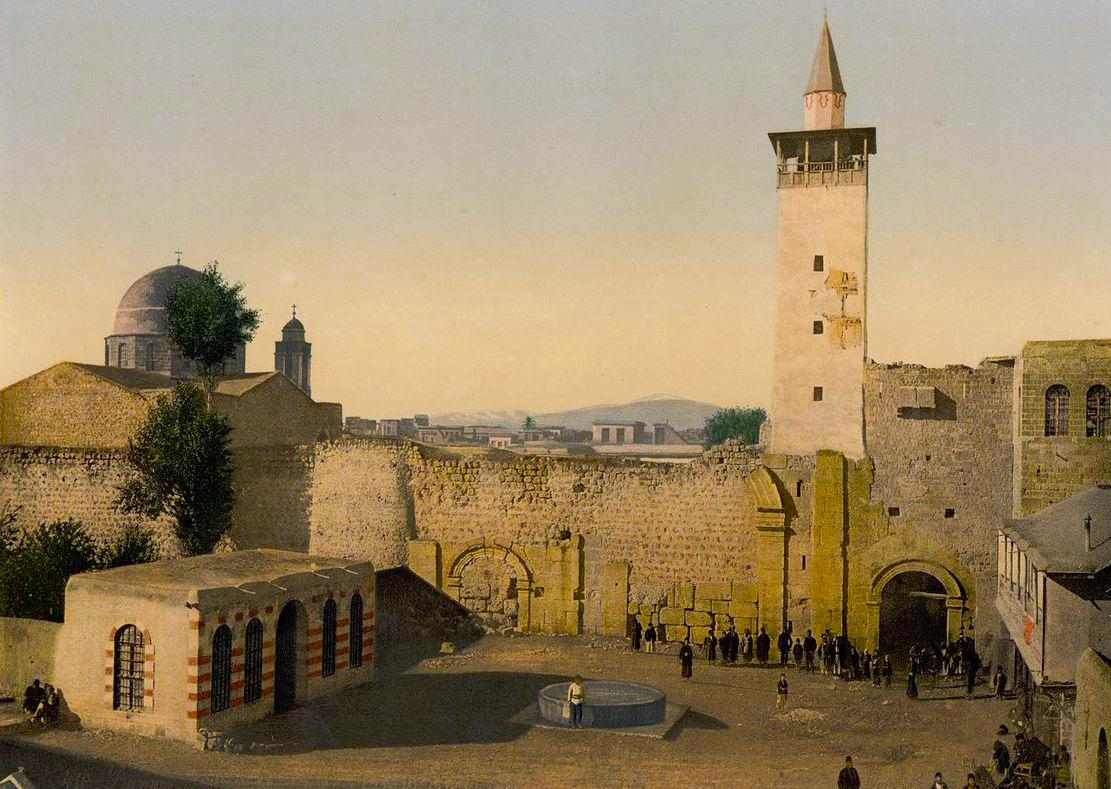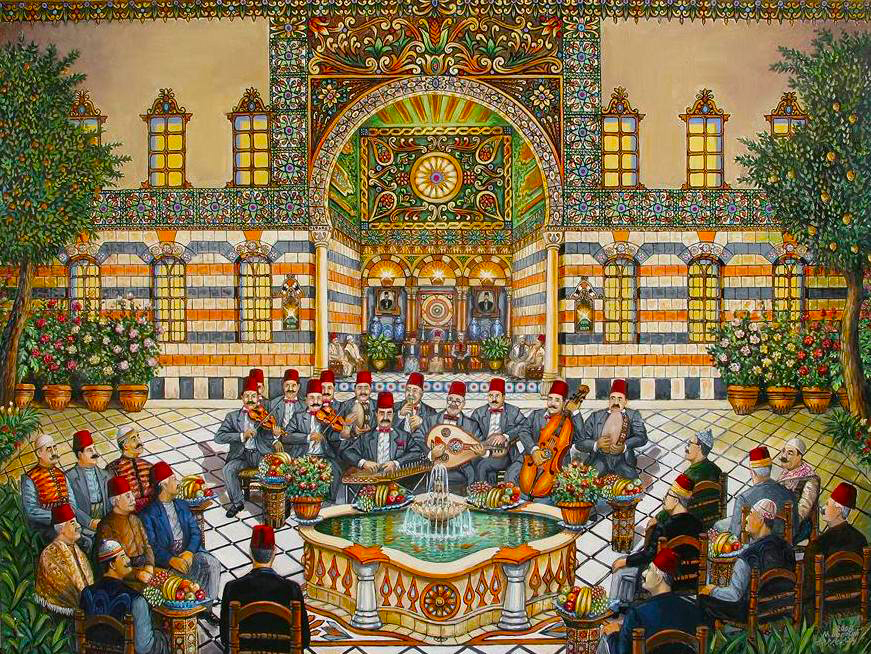Syria is one of the most historically rich regions in the world, often described as a crossroads of civilizations. Over the course of 11,000 years, this land has witnessed the rise and fall of countless peoples, empires, and cultures—each leaving its imprint on the landscape, society, and heritage of the area. From prehistoric settlements to modern-day Damascus, Syria’s story is a vivid tapestry of human progress, innovation, and interaction.
| Period/Era | Approximate Dates | Key Civilizations / Events | Highlights / Contributions |
|---|---|---|---|
| Prehistoric (Neolithic) | ~11,000 – 6,000 BCE | Early farming communities (Tell Abu Hureyra) | Beginnings of agriculture and settled life |
| Bronze Age | ~3500 – 1200 BCE | Ebla, Mari, Ugarit, Amorites, Hittites | Early city-states, writing (cuneiform, alphabet), trade |
| Iron Age | ~1200 – 732 BCE | Aramaeans, Assyrians | Spread of Aramaic language, Assyrian conquest |
| Neo-Babylonian Empire | ~612 – 539 BCE | Neo-Babylonians | Regional control after Assyria |
| Achaemenid Persian Empire | 539 – 332 BCE | Persians | Administrative organization, cultural tolerance |
| Hellenistic Period | 332 – 64 BCE | Seleucid Empire | Greek culture, founding of Antioch |
| Roman and Byzantine Periods | 64 BCE – 638 CE | Romans, Byzantines | Urban prosperity, Palmyra, spread of Christianity |
| Early Islamic / Umayyad Caliphate | 638 – 750 CE | Umayyads | Damascus as capital, Islamic arts, Umayyad Mosque |
| Abbasid and Later Islamic | 750 – 1516 CE | Abbasids, Mamluks | Continued Islamic culture, Crusades, Mongol invasions |
| Ottoman Period | 1516 – 1918 CE | Ottoman Empire | Trade hub, Ottoman architecture and administration |
| Modern Syria | 1918 – Present | French Mandate, Independent Syria | Modernization, urban expansion, cultural resilience |
Prehistoric Beginnings: The Dawn of Civilization (Circa 11,000–6,000 BCE)
Syria’s history begins deep in the prehistoric era. Archaeological sites such as Tell Abu Hureyra on the Euphrates River provide evidence of some of the world’s earliest known farming communities. Around 11,000 years ago, hunter-gatherer groups in this region began domesticating plants and animals, laying the foundations of agriculture.
The Neolithic Revolution in Syria transformed human society from nomadic lifestyles to settled farming villages. Early inhabitants cultivated wheat and barley, and domesticated sheep and goats. These developments allowed populations to grow and complex societies to form.
Tell Abu Hureyra is particularly significant as it reflects one of the earliest transitions from foraging to farming, making Syria a key site in the story of human civilization.
The Bronze Age and Early City-States (Circa 3500–1200 BCE)
By the third millennium BCE, urbanization took root in Syria. Cities such as Mari, Ugarit, and Ebla emerged as prominent centers of culture, trade, and political power.
- Ebla (near modern Idlib) was a major city-state around 2500 BCE, famous for its archives of cuneiform tablets that reveal an advanced bureaucracy, literature, and international diplomacy. The Ebla tablets are among the earliest written records, illuminating political alliances and economic activity.
- Mari, located on the Euphrates, became a powerful kingdom known for its palace complex and vast archives of diplomatic correspondence. It controlled trade routes linking Mesopotamia and the Mediterranean.
- Ugarit, on the coast near modern Latakia, was a major port and cultural hub from 1450 to 1200 BCE. Ugaritic texts include some of the earliest alphabets, influencing later scripts used throughout the region.
These city-states formed the foundation of early Syrian civilization, facilitating trade, religious innovation, and cultural exchange between Mesopotamia, Egypt, and Anatolia.
The Amorites, Hittites, and Mitanni (Circa 2000–1200 BCE)
During the second millennium BCE, Syria became a melting pot of peoples and powers.
- The Amorites, a Semitic people, established several kingdoms, including the influential city of Yamhad (Aleppo). They played a critical role in shaping Syria’s political landscape.
- The Hittites, from Anatolia (modern Turkey), exerted influence over northern Syria. They competed with the Egyptian New Kingdom and other local powers for control of strategic cities.
- The Mitanni, a Hurrian-speaking kingdom based in northern Syria, were known for their horse breeding and military prowess. They engaged diplomatically and militarily with Egypt and the Hittites.
This period was marked by intense competition and shifting alliances, which enriched Syria’s cultural diversity.
The Iron Age and Aramaean Kingdoms (Circa 1200–732 BCE)
The collapse of Bronze Age civilizations around 1200 BCE led to the rise of new peoples, including the Aramaeans. They established kingdoms across Syria, including Aram-Damascus, which gave its name to the Aramaic language.
Aramaic became the lingua franca of much of the Near East, used in administration and trade well into the first millennium BCE. This era also saw the development of distinctive Syrian art, religious practices, and city-states.
The period ended with the expansion of the Assyrian Empire, which conquered much of Syria by the late eighth century BCE.
The Assyrian and Neo-Babylonian Empires (Circa 900–539 BCE)
Assyria, based in northern Mesopotamia, dominated Syria from around 900 BCE until its fall in 612 BCE. Syrian cities became Assyrian provinces, and the empire’s efficient administration and military brought relative stability.
After Assyria’s fall, the Neo-Babylonian Empire briefly controlled Syria before the arrival of the Persians.
The Achaemenid Persian Empire (539–332 BCE)
Syria became part of the vast Achaemenid Empire under Cyrus the Great. It was divided into satrapies (provinces), and the region flourished as a vital link between Persia and the Mediterranean.
The Persians respected local customs and religions, which helped preserve Syrian cities and their cultures.
The Hellenistic Period and the Seleucid Empire (332–64 BCE)
Alexander the Great conquered Syria in 332 BCE, introducing Greek culture and language. After his death, the region became part of the Seleucid Empire, founded by one of Alexander’s generals.
The Seleucids founded new cities like Antioch (near modern Antakya, Turkey), which became a major cultural and commercial center blending Greek and local traditions.
Hellenistic influence shaped Syrian art, architecture, and religion, creating a cosmopolitan society.
The Roman and Byzantine Eras (64 BCE–638 CE)
In 64 BCE, Syria was annexed by the Roman Republic and later became a province of the Roman Empire. Under Roman rule, cities such as Palmyra, Bosra, and Damascus prospered.
- Palmyra thrived as a wealthy caravan city bridging East and West.
- Bosra featured a magnificent Roman theater and became a key administrative center.
Damascus grew as a vital city in the empire and later the Byzantine Empire.
Christianity spread widely in Syria during this time, and many churches and monasteries were built.
The Islamic Conquest and Umayyad Caliphate (638–750 CE)
In 638 CE, Arab Muslim armies conquered Syria. Damascus became the capital of the Umayyad Caliphate (661–750 CE), marking a golden age.
The Umayyads transformed Damascus into a political and cultural capital of the Islamic world. They built the iconic Umayyad Mosque, one of Islam’s greatest architectural achievements.
This period saw the flourishing of Arabic language, Islamic arts, and scholarship.
The Abbasid and Later Islamic Periods (750–1516 CE)
The Abbasids moved the capital to Baghdad, but Syria remained an important province with vibrant cities.
During this time, Syrian cities faced invasions from Crusaders, Mongols, and eventually the Mamluks, who ruled from Cairo.
The Mamluks fortified cities like Aleppo and Damascus and fostered a revival of Islamic architecture and learning.
Ottoman Rule (1516–1918)
Syria became part of the Ottoman Empire in 1516. Under Ottoman rule, cities like Damascus and Aleppo remained major trade hubs connecting Europe, Asia, and Africa.
The Ottomans developed infrastructure, including caravanserais and markets. Traditional crafts and cultural life continued to thrive.
Modern Syria: French Mandate to Independence and Beyond (1918–Present)
After World War I, Syria fell under French mandate until gaining independence in 1946. The 20th century brought political upheaval, modernization, and cultural change.
Damascus expanded with modern neighborhoods, roads, and institutions, blending ancient heritage with contemporary life.
Despite challenges, Syria remains a country of deep historical roots and rich cultural diversity.
Conclusion: Syria’s Endless Legacy
From its prehistoric villages to modern cities, Syria has been a stage for some of the most important chapters in human history. Each civilization that passed through contributed to the mosaic of languages, religions, arts, and knowledge that define the region today.
Understanding Syria’s 11,000-year story offers invaluable insights into the origins of civilization and the enduring spirit of a land at the crossroads of the world.



